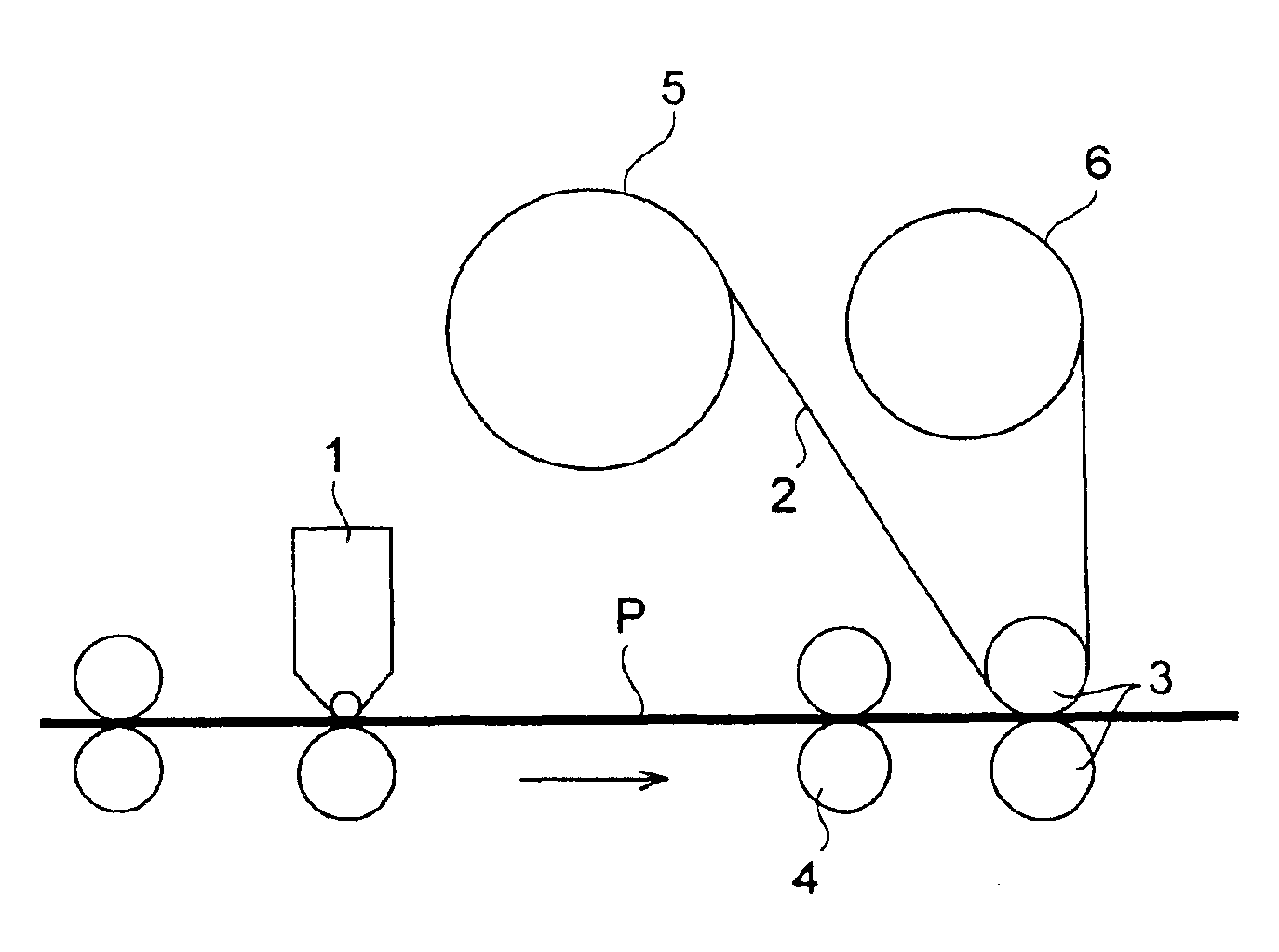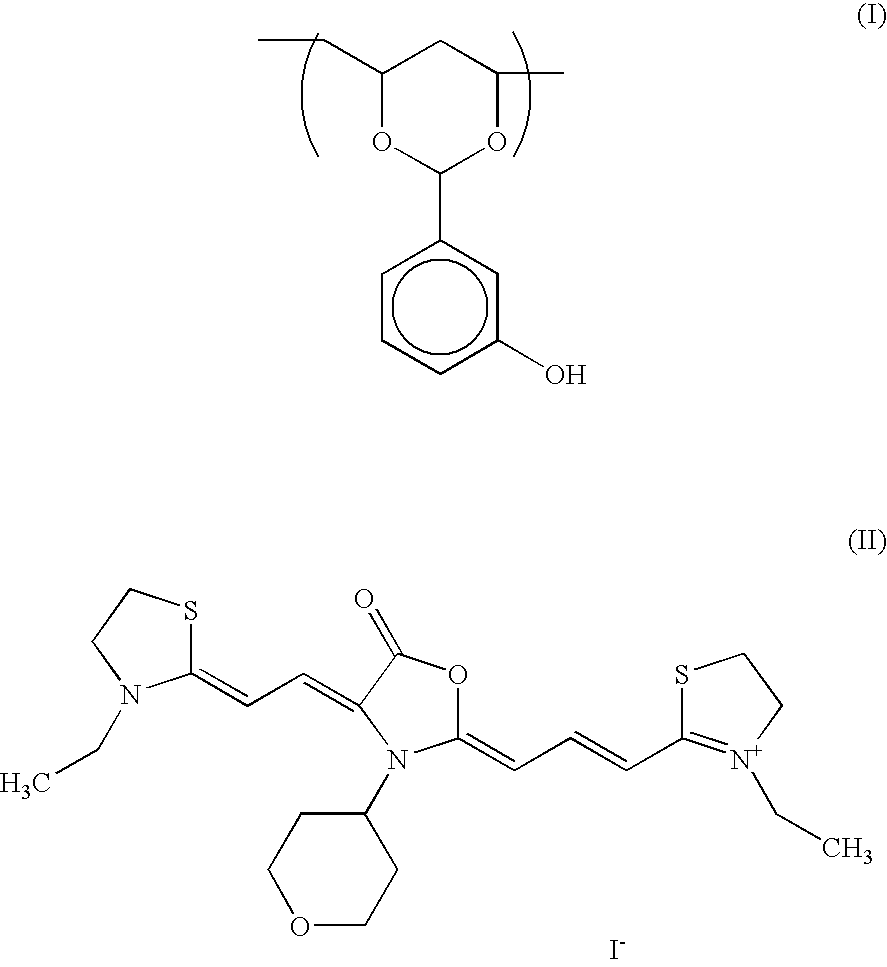Method of processing light-sensitive material
a technology of light-sensitive materials and processing methods, applied in the direction of diffusion transfer processes, photosensitive materials, instruments, etc., can solve the problems of large amount of waste liquor of developing solution, not only long contact time, and defects in the specific examples of peeling sheets, etc., to reduce or substantially no waste solution, excellent printing characteristics, and low cost
- Summary
- Abstract
- Description
- Claims
- Application Information
AI Technical Summary
Benefits of technology
Problems solved by technology
Method used
Image
Examples
example 1
[0090]According to the method as disclosed in U.S. Pat. No. 5,427,889 which is incorporated as a reference herein, electrolytic roughening treatment and anodization of an aluminum support were carried out to obtain an aluminum support having a thickness of 0.30 mm to which pits with a diameter of 0.03 to 0.30 μm had been formed with about 5,600 per 100 μm2 on a plateau with an average diameter of about 5 μm, and the pit has an average diameter of 0.08 μm. This aluminum support was subjected to anodization after the surface roughening treatment, and had an amount of aluminum oxide of 2.5 g / m2 and an average roughness (Ra) measured by JIS B 0601 (1994) of 0.5 μl to 0.6 μm.
[0091]On the aluminum support, a palladium sulfide nuclear was coated and then dried. An amount of nucleus contained in a physical development nuclei layer was 3 mg / m2.
[0092]As a hydrophilic colloid, alkali-treated gelatin was used. As a silver halide emulsion, a silver chloroiodobromide emulsion containing 15 mol % ...
example 2
[0100]The developing solution prepared in the same manner as in Example 1 was coated onto a lithographic printing material in an amount of 40 ml per 1 g of gelatin, and 15 seconds later, a master roll (5) of a peeling sheet was moved so that a roll state-peeling sheet (2) was brought into close contact with the surface of the lithographic printing plate by nip rolls (3) and a silver halide emulsion layer was peeled off. The entire silver halide emulsion layer was transferred to the coating layer of the roll state-peeling sheet. Waste liquor of the developing solution was substantially not generated.
[0101]Thereafter, process for preparing a lithographic printing plate was carried out in the same manner as in Example 1 and printing was carried out. Similarly as in Example 1, it was a lithographic printing plate excellent in ink-receptive properties and having a high printing endurance of 100,000 sheets or more.
example 3
[0102]The developing solution prepared in the same manner as in Example 1 was coated onto a lithographic printing material in an amount of 70 ml per 1 g of gelatin, and 12 seconds later, about 40% of the coated developing solution was removed by squeegee rolls (4), and the silver halide emulsion layer was similarly removed after 15 seconds. Thereafter, process for preparing a lithographic printing plate was carried out in the same manner as in Example 1 and printing was carried out. It was a lithographic printing plate excellent in ink-receptive properties and having a high printing endurance of 100,000 sheets or more.
PUM
| Property | Measurement | Unit |
|---|---|---|
| time | aaaaa | aaaaa |
| contacting time | aaaaa | aaaaa |
| temperature | aaaaa | aaaaa |
Abstract
Description
Claims
Application Information
 Login to View More
Login to View More - R&D
- Intellectual Property
- Life Sciences
- Materials
- Tech Scout
- Unparalleled Data Quality
- Higher Quality Content
- 60% Fewer Hallucinations
Browse by: Latest US Patents, China's latest patents, Technical Efficacy Thesaurus, Application Domain, Technology Topic, Popular Technical Reports.
© 2025 PatSnap. All rights reserved.Legal|Privacy policy|Modern Slavery Act Transparency Statement|Sitemap|About US| Contact US: help@patsnap.com



